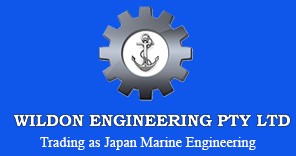Supplier of Navigation and Communication Equipment, and Spares for Shipping Companies in Australia
Blog | August 5th, 2019The navigation and communications suite onboard an ocean-going vessel will perform well throughout its journey. Crisp radio channels allow for long ship-to-shore dialogues, so a chain of command is maintained. Meanwhile, a seafaring ship’s helmsman checks his magnetic compass and Radar panel periodically to make sure the craft isn’t drifting off course. However, even with the odds in a ship’s favour, worst-case scenarios can and often do occur.
Establishing a Reliable Marine Umbilical
It might look like a ship is on its own when it loses contact with land, but nothing could be further from the truth. Smaller fishing crafts are equipped with advanced GPS systems and Radar panels and all kinds of electronic guidance units. If that’s not enough to create a virtual connection between a deep-sea vessel and a populated land area, then there’s VHF (Very High-Frequency) radio on board, too. At a moment’s notice, the skipper can pick up a handset and talk to someone who’s waiting for a message somewhere onshore. If an emergency crops up, a quick ship-to-shore conversation will call out a helicopter or rescue boat.
Intelligently Managed System Redundancies
Massive containment vessels go the extra mile; they install satellite linkages to monitor their cargo. Located elsewhere in the comms suite, incredibly accurate GPS navigation instruments have developed into such vessel-essential components that old lighthouses are no longer needed to protect ships from striking a concealed rocky outcropping. Now, having rifled off all of the benefits that are embedded inside every vessel, in one way or another, what if a circuit inside one of those electronic boxes were to burn out? Well, that’s not a problem, not as long as a boat employs a redundancy-biased parts replacement program. Simply put, for every potentially defective navigation and communication circuit, there should be a replacement part stored somewhere nearby. If a VHF radio issues static and nothing else, a spare part restores the essential lines of communication. If the navigation equipment breaks down, a replacement part or backup unit is there to prevent the ship from getting lost.
On a seafaring boat, communications equipment keeps vessels tied to the shore. If a ship includes a VHF radio set, it’s probably used as a backup to a more capable satellite communications service. Even so, as redundancy protection, shipping companies in Australia demand high-quality branded spare parts, for even a backup unit can go wrong. Just as important, navigation instruments absolutely must have backups and spare parts, which are sourced from a reputable supplier. After all, without these instruments, there’d be nothing to keep seagoing mariners on course and away from storms, rocks, and busy shipping lanes.
Optimized by NetwizardSEO.com.au
Recent Posts
- Yanmar Parts Online Australia – Genuine Yanmar Spare Parts at Competitive Trade Prices
- Turbochargers Supply from Japan Marine: Wildon Engineering’s Excellence in Global Shipping
- Mitsubishi VOS Ballast Water Treatment System: Next-Generation Marine Environmental Solutions
- Yanmar Marine Compressors: Reliable Power Systems for Commercial Vessels
- Water-Lubricated Stern Tube Bearings Explained: How EVR Technology Supports Marine Propulsion
- YANMAR Auxiliary Generator Engine Parts for Commercial Vessels
- Fluid Control Systems: Innovations in Marine Applications
- Yanmar Diesel Generators Australian Distributor: Power for Shipping & Marine Operations
- Navigation & Communication Equipment: Essential Tools for Safe Voyages
- Stern Tube Seals: Preventing Leaks & Maintaining Vessel Integrity
